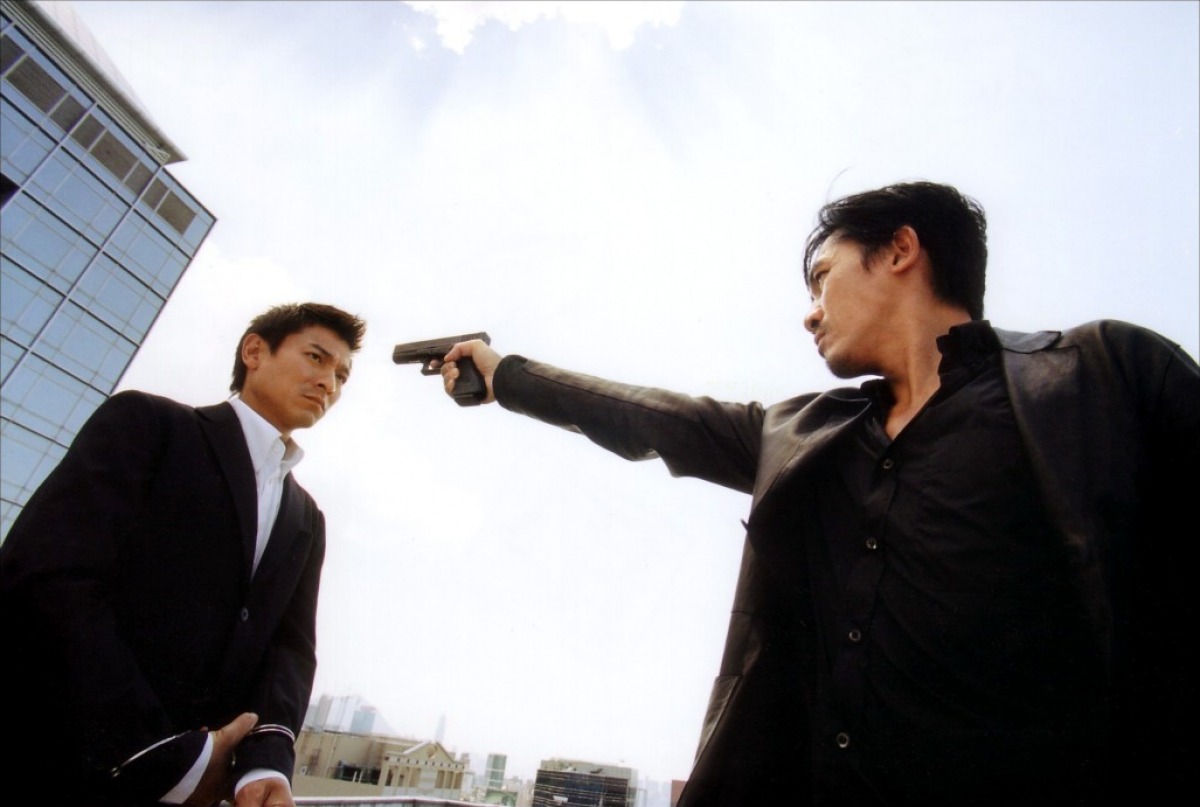
The portrayal of the police and cops in cinema has both varied and changed throughout the years since films were first produced. Some of the earliest versions of the police were the Keystone Cops, a group of bumbling police officers from the silent film era. Then there were the gangster films of the 1930’s, which often showed the police as ineffective.
Then came the film noir’s of the 1940’s and 1950’s and the hardboiled detective or private investigator, such as Phillip Marlowe in The Big Sleep and Mike Hammer in Kiss Me Deadly. These characters had harder edges and sometimes treaded the line in being borderline criminals. T
he 1960’s television programs saw a new version of the police that was focused on following procedural rules and doing what was right, such as Joe Friday in Dragnet. Changes in the ratings system in the late 1960’s brought about more adult rated films featuring a vigilante cop, willing to ignore the rules in order to get the job done. Popular ones included Dirty Harry, Bullitt, and The French Connection.
The 1980’s saw a combination of buddy cop films and the cop viewed as an action hero, such as Lethal Weapon, Die Hard, Robocop, and 48 Hours. The 1990’s saw the cop portrayed as being more intellectual in films such as Silence of the Lambs and Seven. There have also been popular comedies that have lampooned and satirized the cop genre, such as Police Squad, the Naked Gun trilogy, and Hot Fuzz.
Because of all of these changes throughout the years, the cop film has often crossed into various genres: crime, thriller, film noir, gangster, comedy, exploitation, or somewhere in between. So this list has a large mix of genres that have one common item, the film contains a cop, detective, or some police element.
They are all over the spectrum and may have a cult following for a number of reasons; it may have failed at the box office, been critically reviled, is excessive and exploitative, was relatively unknown, is a favorite genre of its fans, or because of its cast and crew.
1. Big Store (1941)
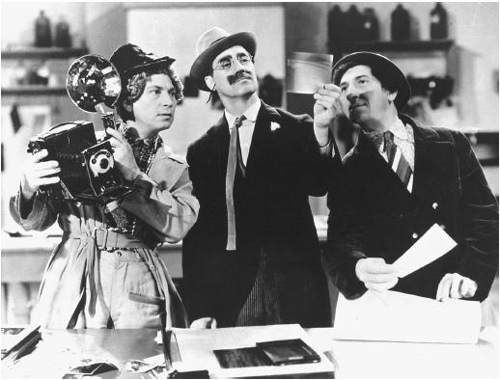
“Howl . . . And Farewell! Their Last Picture . . . And Their Best!” [1]. Billed as their final movie, the Marx Brothers play a group of the worst department store detectives ever, who manage to foil a murder plot by the department store manager.
Normal Marx Brothers hilarity ensues including a scene involving multiple beds comings out of the walls and a long crazy chase scene at the end, across the entire store featuring many gags. It also includes seven musical numbers in the film, including the usual Chico playing on the piano and Harpo playing a Harp.
This didn’t actually end up being the last Marx Brothers movie, just the last one on their MGM contract. They would appear two more times on the big screen in A Night in Casablanca and Love Happy. The film is not their best and not as smart and fast paced as their earlier ones from the 1930’s, but it still has its moments.
If you enjoy the Marx Brothers or other silly comedies from the early film era, then you may enjoy this.
2. Abbott & Costello Meet the Invisible Man (1951)
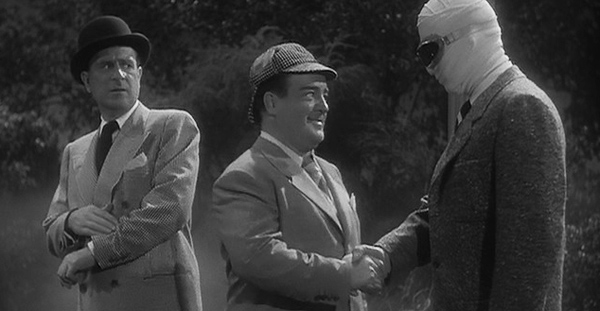
“It’s all NEW and a RIOT too!” [2]. Bud Abbot and Lou Costello play a pair of bumbling private detectives who are hired by a boxer named Tommy Nelson that is wanted for the murder of his boxing promoter. He injects himself with the invisible man serum in order to investigate the murder and clear his name, while also helping Abbott and Costello along the way.
It silliness meets horror in this horror comedy spoof of the Universal monsters series. This was the third of seven films in which the comedy duo would meet famous Universal characters, coming of the success of Abbott and Costello Meet Frankenstein and Abbott and Costello meet the Killer, Boris Karlof.
The script was originally written to be a straight horror film in the Invisible Man series, but was adapted to include the comedic elements of the comedy duo [2]. That is pretty obvious when watching this, because the story is serious except for things that happen to Bud and Lou.
It is full of a mix of comedy, great gags, and special effects including a scene where Lou accidently hypnotizes a group of cops and also when he wins a boxing match with the help of the invisible man. It is filmed very well in black and white, with stark contrast and good shadows that add to the horror and film noir effect.
The film was pretty successful and has a cult following among horror-comedy fans, Universal monsters fans, and fans of the comedy duo. If you enjoy any of those or other slapstick style comedy like The Three Stooges or Laurel and Hardy, then you would be interested in this.
3. Female Jungle (1956)
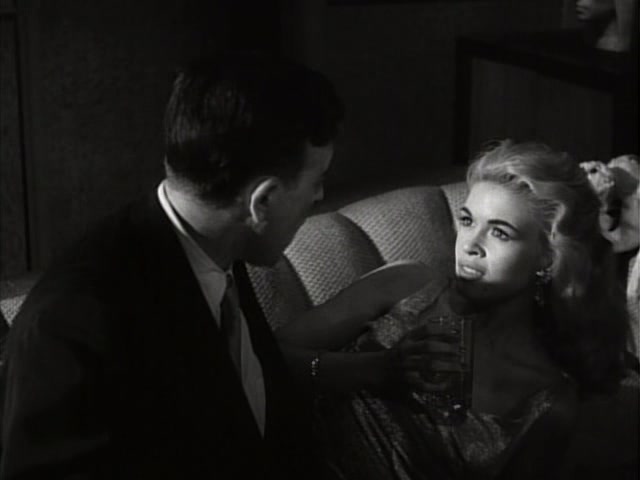
“Thrills jolt with the burst of gunfire!” [3]. An actress is murdered near a bar on the night of her movie premier. Off duty police detective Jack Stevens (Lawrence Tierney) was at the bar drinking most of the night, becoming unsure of his innocence when he can’t remember anything that happened the previous couple hours.
Fearing he may have killed her, his investigation leads him down the road of the columnist (John Carradine) associated with the actress, a caricaturist and his wife, and the caricaturist’s lover (Jayne Mansfield).
This is a fairly cheap and poorly made film noir that has significance for several reasons. It was the only film noir that American International produced, who were known more for their sci-fi, horror, and teenage exploitation films [4].
It also marked the return of once-famous actor Lawrence Tierney, “whose off-screen bar brawls and numerous arrests during the 1940s had made him persona non grata in Hollywood” [4]. After this film was made, he was pretty much just working as a cab driver in New York [4]. He is most likely remembered by modern audiences for his appearance in Reservoir Dogs, playing the growling, tough guy boss Poppa Joe Cabot.
It also marked the first film appearance by 1950’s and 1960’s sex goddess Jayne Mansfield, who plays the overly dramatic secret lover of the caricaturist.
This was shot in 1954 in six days, with a reported budget of $49,000 [5]. Mansfield’s screen time was increased and the script had to be rewritten because the Lead actress Katherine Crowley was absent, claiming that she had been raped [5]. It was released two years later when Mansfield’s popularity had risen [4].
It mainly has a cult following among fans of film noir or Mansfield. So be warned, it is a cheaply produced, poorly directed film.
4. World of the Depraved AKA Mundo Depravados (1967)
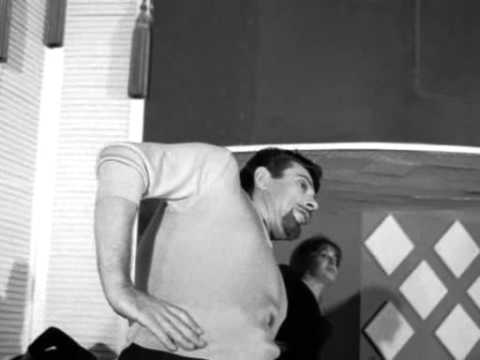
“A sinerama of sex!” [6]. The full moon sex killer is killing young women that go to an exercise club. Two jokester detectives are assigned to investigate the murders.
This is the movie version of Ed Wood and John Waters creating some weird baby movie offspring, with bad acting, bad filming, silly jokes, silly dialogue, and nudity. So if you look for those things in a movie, then you will absolutely love this. Right from the beginning, you know what to look forward to as the killer calls the girl from a phone booth and says “Arlene Marshall, Do you know what I’d like to do to you?”
Mouth opened and eyes bug-eyed, she proceeds to run out of her apartment leaving her door wide open. He chases her into a factory and kills her. The detective asks the coroner the cause of death and he looks at her neck and says “I can’t tell from this side, let me look at the other side. Oh there you are, knife wound.”
This has a cult following among exploitation film fans. It has been released on DVD by Something Weird Video, who specialize in the obscure and weird. So if you love exploitation or bad films, then you will enjoy this one.
5. Hanzo the Razor: Sword of Justice (1972)

This is probably the most extreme and exploitative film on the list, a Japanese combination of Dirty Harry, samurai, and a sexploitation film. Hanzo “the razor” Itami (Shintaro Katsu) is a detective during the Japanese Edo period, between 1603 and 1868, who is trying to track down a killer that escaped from an island prison.
Hanzo has a particularly interesting way that he obtains information from the female suspects, by torturing them with his gigantic penis. He maintains the size of his huge member through a series of exercises and devices in his home, including a bale of rice and a large stone block that has an indentation of his penis. He rapes his female suspects until they provide him with the information that he needs, and then afterwards they are enamored with him for his huge member and sexual prowess.
The Hanzo story is based upon a manga that is written by Kazuo Koike, who also created Lone Wolf and Cub. The series is also notable because it stars Shintaru Katsu, who is best known for portraying the blind swordsman Zatoichi in 26 films and a television series. He also appeared in many more chambara, or sword fighting films. Two sequels were also made. There is less action in this one than most samurai films, focusing more on the sexploitation aspect.
This has a cult following among fans of sexploitation, Japanese Pinky violence, samurai films, and of Katsu. So if you like any of those, then you have to see these at least once.
6. Across 110th Street (1972)
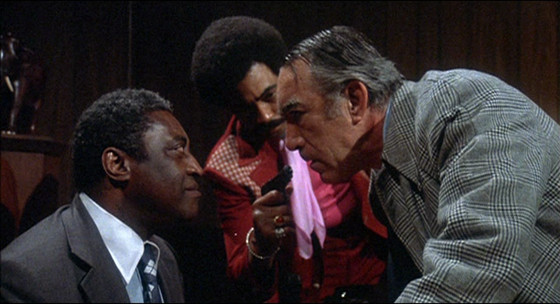
“If you steal $300,000 from the mob, it’s not robbery. It’s suicide” [7]. Two New York City cops are looking for three black criminals that murdered seven people in a robbery of $300,000 of money from a Mafia controlled Harlem location.
One cop is the procedure following African-American William Pope (Yaphet Kotto) and the other is an older racist vigilante style Italian-American Frank Mattelli (Anthony Quinn). The mafia also have their own men looking for the money. The robbery may start a gang war between the mafia and the black gangs in Harlem. Will the cops or Mafia catch the bad guys first?
This was an attempt to add a Dirty Harry type of police film into the Blaxploitation genre. In a way it’s a buddy cop film, without the comedy and focusing on the interracial issues of the era. There are very good performances from both lead actors, especially Quinn as the aging white cop.
The film is shot well by Barry Shear, who was mostly known as a television director. The soundtrack stands out, including several songs performed by Bobby Womack. The theme song named “Across 110th street” was popular, reaching #19 on the Billboard chart of Hot Black Singles in 1973 [7].
This was the first film to use the Arriflex BL camera, which enabled more hand-held shots and for them to record usable sound at the same time [7]. The role of Mattelli was turned down by John Wayne, Burt Lancaster, and Kirk Douglas, leading Executive producer Quinn to take on the role [7].
The film was a financial success and has a cult following among Blaxploitation fans. If you like the blaxploitation genre or crime films, then give this one a chance.
7. Gore Gore Girls (1972)
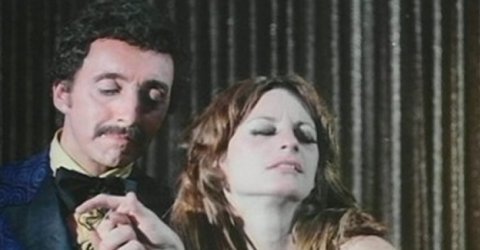
“Laugh? I thought they’d die!” [8]. This was the final film from director Herschell Gordon Lewis, the essential creator of the splatterfest horror film. Strippers are being murdered and mutilated at a club and a female reporter enlists the help of a detective to find the killer. Their investigation into the suspects leads them to meet a messed up Vietnam vet that squashes vegetables, a radical feminist group, a weird college student, and a ton of strippers.
This was directed by Lewis, who was known for low budget exploitative films such as Blood Feast, Two Thousand Maniacs, The Wizard of Gore, Color Me Blood Red, and The Gruesome Twosome.
Just like this and most of his other films, they are all usually “uneven, disgusting and offensive in places, amusing in others, with their principal virtue as a group of films probably their rough-hewn naivety” [9]. So if you enjoy sleaze and exploitation and cheap gore, then this is up your alley. Featuring scenes where women are shoved head first into a fryer, dismemberment by a meat cleaver, pounding by a meat tenderizer, and having an eye ripped out.
Lewis stopped making films after this because they were becoming less lucrative with the changes in the ratings and far bolder exploitative films being released. If you love exploitation, horror, gore, or cheap movies, then you should watch this. You may also enjoy Something Weird, I Drink Your Blood, and the Gruesome Twoesome.
8. High Crimes AKA La polizia incrimina la legge assolve (1973)
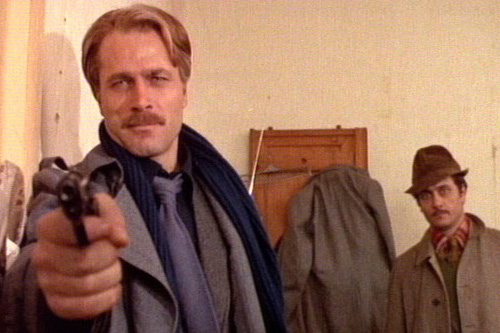
This is an Italian production about Commissioner Belli (Franco Nero) trying to bring down a large drug trafficking ring run by the mafia. As he digs deeper, the people around him are murdered by the criminals in order to stop his investigation. This includes the Chief Commissioner, his wife, and his daughter. This leads to the ultimate showdown, as he tries to shut down the drug smuggling operation.
This is the only Italian poliziottesco film on this list, but it is one of the best examples. These are the Italian police and crime films that were created in response to the popularity of American films like Dirty Harry, similar to how they had copied the Hercules type films and westerns before.
The Italian film industry would try to replicate a popular American genre, and then when those films did well knock-offs where made of those successful Italian productions. The producers of this film wanted to create something similar to Bullitt and The French Connection, with “crazy car chases, breathtaking shootings, [and] intricate investigations” [10]. And that’s exactly what this film delivers, with director Enzo Castellari and Franco Nero at their best.
Castellari is known for Keoma, Inglorious Bastards and the Bronx Warriors. Nero is best known for portraying the character Django in the original Django western, along with other appearances in the western and police genre.
This has a cult following mostly among fans of poliziottesco, and Nero. If you’re a fan of either, or cop films then you should give this one a chance. Keep in mind it will most likely be dubbed.